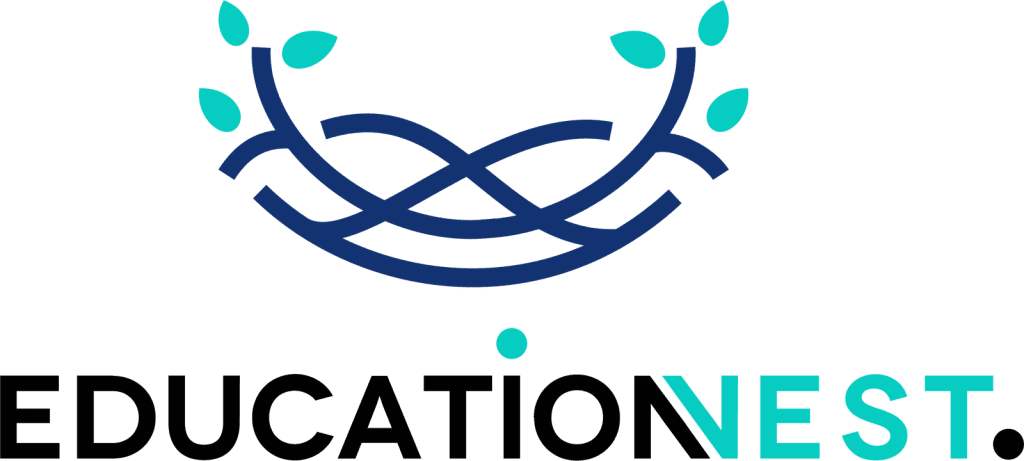
You have just wrapped up another round of leadership training for your team. The sessions were full of energy, the facilitators were top-notch, and everyone left with notebooks full of ideas. But a few months later? Crickets. No real changes in how decisions get made, no uptick in team morale, and definitely no bump in the bottom line. Sound familiar? If you’re nodding along, you’re not alone. Too many of us pour time and money into developing leaders, only to wonder if it was all just a feel-good exercise.
The truth is, leadership training can be a game-changer for your organization but only if you treat it like the investment it is. That’s where ROI comes in. Return on Investment isn’t some dusty finance term; it’s your ticket to proving that those training dollars actually pay off. And today, I’m sharing the ultimate ROI formula tailored just for leadership training. It’s straightforward, actionable, and designed to turn vague “soft skills” gains into hard numbers your boss (or board) will love.
In this blog post, we willl break down why traditional training often misses the mark, walk through the formula step by step, and look at real examples from companies that have made it work. By the end, you’ll have the tools to measure your own training’s impact and make smarter choices next time. Ready to stop guessing and start knowing? Let’s dive right in.
Why Leadership Training Often Misses the Mark (And How ROI Fixes It)
Let’s get real for a second. You’ve probably felt the frustration: You invest in a program promising to build better leaders, but then nothing sticks. Teams keep fumbling through conflicts, innovation stalls, and turnover creeps up.
According to recent surveys from HR pros, over 70% of organizations struggle to link training spend to business results. Why? Because most programs focus on the “what” of leadership giving tips on communication or motivation without tackling the “so what.” How does that translate to more sales, happier customers, or a stronger company culture?
The pain point here is clear: Without a way to track results, training feels like an expense, not an asset. Budget cuts hit first, and you end up recycling the same old ineffective sessions. But flip the script with ROI. This formula shifts your view from “Did they like it?” to “Did it deliver?” It forces you to connect training to key outcomes like productivity and retention, giving you data to justify every penny.
Think of it like this: If you’re a mid-level manager staring at a $50,000 training budget, ROI helps you answer the tough questions from upstairs. “What did we get for that?” becomes “We gained $200,000 in productivity.” Suddenly, you’re not just defending the spend—you’re championing it. And for smaller teams or startups, it’s even more vital; every dollar has to count double.
The Building Blocks of the Ultimate ROI Formula
Okay, enough venting—let’s talk solutions. The ultimate ROI formula for leadership training boils down to this simple equation:
ROI = [(Performance Gains + Retention Savings + Innovation Value) – Training Costs] / Training Costs × 100
Don’t worry if that looks a bit math-y at first glance. We’ll unpack each piece so it’s as easy as your morning coffee run. At its core, this formula captures the full picture: Not just immediate wins, but the ripple effects that make great leaders indispensable.
Why these specific building blocks? Performance gains cover the day-to-day boosts, like faster decision-making. Retention savings tackle the hidden cost of losing talent (hello, expensive rehiring). And innovation value? That’s the magic sauce those creative breakthroughs that drive long-term growth.
Subtract your total training costs (facilitators, materials, time away from desks), divide by those costs, and multiply by 100 for a percentage. A positive number means you’re in the green; aim for at least 200% to really impress.
This isn’t pulled from thin air. It’s based on proven models from training experts, adapted for today’s fast-paced workplaces. The key? It puts numbers to the intangibles, so you can spot what’s working and tweak what’s not. Imagine pitching your next program with data like, “Last year’s training delivered a 250% ROI let’s double down.” That’s the kind of clarity that turns skeptics into supporters.
You Must Read
7 Corporate Training Providers That Deliver Big Results for SMBs in 2026
Skills Gaps in the Modern Workplace: Definition, Examples, and Identification Strategies
Step 1: Measure Performance Gains – The Quick Wins You Can See
Start with the low-hanging fruit: How has the training made your leaders (and their teams) better at their jobs? Performance gains are about tangible improvements, like reduced meeting times or higher output.
Here’s how to nail this: Before training, baseline your metrics. Track things like project completion rates or error reductions in a shared dashboard. Post-training, survey participants at 30, 60, and 90 days: “On a scale of 1-10, how confident are you in delegating tasks now?” Then tie it to dollars. If a team of 10 leaders saves 2 hours a week on better planning (at $50/hour average wage), that’s $4,000 monthly.
I remember chatting with a sales director who did this exact thing. Her team was bogged down by micromanaging bosses. After a delegation-focused workshop, they logged 15% more deals closed. Using simple spreadsheets, she calculated $150,000 in annual gains. The pain of endless oversight? Gone. The solution? Data-driven proof that training pays immediate dividends.
Pro tip: Use free tools like Google Forms for surveys and Excel for calculations. Keep it light—no one’s got time for complex software.
Step 2: Calculate Retention Savings – Keeping Your Best People Longer
Nothing stings like losing a star leader to a competitor. The average cost to replace one? Up to 200% of their salary, including lost knowledge and ramp-up time. Leadership training shines here by building loyalty and skills that make people want to stay.
To measure this, look at turnover rates pre- and post-training. If your voluntary exit rate drops from 20% to 12% for trained leaders, crunch the numbers: For a $100,000 salary role, that’s $16,000 saved per retained employee (factoring in recruitment fees and productivity dips).
One HR manager I know faced a revolving door in her exec team—three departures in a year cost her firm $300,000. She rolled out targeted training on work-life balance and career growth. Six months later, retention jumped 25%, saving $75,000 annually. The frustration of constant onboarding? Replaced by a stable, motivated crew. This step shows training as a shield against talent drain, turning a reactive headache into proactive savings.
Step 3: Quantify Innovation and Culture Shifts – The Long Game Payoff
Leadership isn’t just about hitting quotas; it’s about sparking ideas that reshape your business. Innovation value captures those “aha” moments—like a new process that cuts waste or a team ritual that boosts collaboration.
Quantify it by tracking idea generation: Set up a suggestion box or quarterly reviews. Assign dollar values based on implementation: If a trained leader’s idea saves $10,000 in supply costs, log it. For culture, use engagement scores from tools like Gallup polls. A 10-point lift might correlate to 5% higher productivity, worth thousands.
Consider a tech startup I heard about. Their leaders were siloed, stifling creativity. Post-training, they launched three cross-team projects, generating $500,000 in new revenue streams. The old pain of stagnant growth? Solved by valuing the unseen shifts training creates. This piece rounds out the formula, proving leadership development fuels the future.
Step 4: Subtract and Divide – The Math Made Simple
Now, pull it all together. Add up your gains: Say performance nets $100,000, retention saves $50,000, and innovation adds $75,000. Total benefits: $225,000. Subtract training costs—let’s say $40,000 for sessions and follow-ups. Net gain: $185,000. Divide by costs ($185,000 / $40,000 = 4.625) and multiply by 100: 462.5% ROI.
Scared of the numbers? Break it into a table for clarity:
| Component | Value ($) | Notes |
| Performance Gains | 100,000 | Faster projects |
| Retention Savings | 50,000 | Lower turnover |
| Innovation Value | 75,000 | New ideas implemented |
| Total Benefits | 225,000 | |
| Training Costs | 40,000 | Full program spend |
| Net Gain | 185,000 | |
| ROI % | 462.50% | (Net / Costs) × 100 |
This snapshot makes it digestible. Adjust for your scale—small teams might see 150% ROI, but it’s still a win. The beauty? It demystifies the process, letting you iterate quickly.
Real-World Examples That Prove It Works
Theory’s great, but stories stick. Take Zappos, the online shoe giant. They poured resources into leadership programs emphasizing empathy and autonomy. Using a similar ROI approach, they tracked a 30% drop in turnover and $2 million in productivity lifts. Result? A 300% return that kept their fun culture alive amid e-commerce wars.
Or look at a mid-sized manufacturing firm in the Midwest. Facing skills gaps, they trained 20 supervisors on adaptive leadership. Performance metrics showed 18% output gains ($120,000), retention held steady (saving $80,000), and two process tweaks added $60,000 in efficiency. Total ROI: 260%. The CEO, once doubtful, now mandates annual refreshers.
These aren’t outliers. A global study of 500 firms found those measuring training ROI this way saw 4x better results. Your team could be next—imagine sharing a success story like this at your next all-hands.
How to Put This Formula to Work in Your Team
Ready to roll it out? Start small: Pick one leadership skill, like feedback giving, and train a pilot group of five. Gather baselines now, then follow the steps over three months. Involve finance early for buy-in, and celebrate wins with a quick team huddle.
Common hurdle? Resistance to metrics. Counter it by framing ROI as a team tool, not a gotcha. “This helps us all succeed,” you say. For remote or hybrid setups, adapt with virtual check-ins. Tools like SurveyMonkey or Trello keep tracking painless.
The payoff? Clearer budgets, prouder leaders, and a culture that values growth. You’ve got the pain points—wasted spend, talent loss, stalled ideas. Now you’ve got the fix.
Wrapping It Up: Your Next Move for Smarter Training
There you have it the ultimate ROI formula that turns leadership training from a hope into a powerhouse. By measuring performance, retention, and innovation against costs, you create undeniable value. No more second-guessing; just results that build momentum.
What’s one step you’ll take today? Run a quick baseline survey? Share this with your HR lead? Drop a comment below or grab my free ROI calculator template [here](https://example.com/roi-template) to get started. Let’s make your training count—your team (and your sanity) will thank you.
